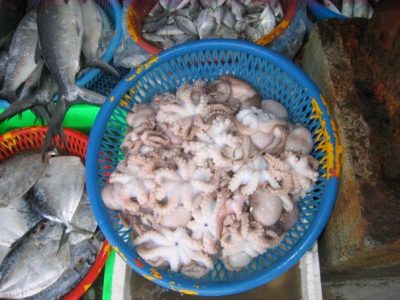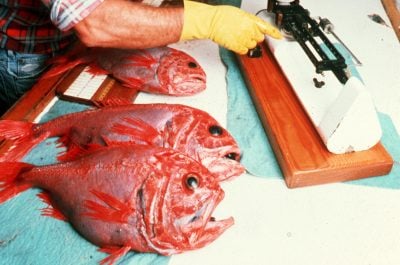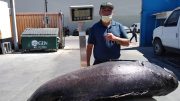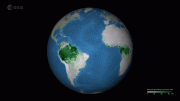
Popular fish and invertebrates, including orange roughy, common octopus, and pink conch, are experiencing rapid declines worldwide.
Fish market favorites such as orange roughy, common octopus, and pink conch are among the species of fish and invertebrates in rapid decline around the world, according to new research.
In the first study of its kind, researchers from the Sea Around Us initiative at UBC, the GEOMAR Helmholtz Centre for Ocean Research Kiel, and the University of Western Australia assessed the biomass —the weight of a given population in the water— of more than 1,300 fish and invertebrate populations. They discovered global declines, some severe, of many popularly consumed species.
“This is the first-ever global study of long-term trends in the population biomass of exploited marine fish and invertebrates for all coastal areas on the planet,” said Maria ‘Deng’ Palomares, lead author of the study and manager of the Sea Around Us initiative at the University of British Columbia’s Institute for the Oceans and Fisheries. “When we looked at how the populations of major species have been doing in the past 60 years, we discovered that, at present, most of their biomasses are well below the level that can produce optimal catches.”
Of the populations analyzed in this study, 82 percent are below the level that can produce maximum sustainable yields because they are being or have been caught at a rate that takes out more than is regrown. This also means that fishers are catching less and less fish and invertebrates over time, even if they fish longer and harder.
“In fact, more than 8 percent of these populations or about 87 populations are currently in the ‘very bad’ category, with biomass levels less than 20 percent of the level that might maximize sustainable fisheries catches,” Palomares said.
These findings were obtained by applying computer-intensive stock assessment methods known as CMSY and BSMY to the reconstructed catch data of the Sea Around Us for the 1950-2014 period. For stocks with independent assessments, these methods produced results similar to the “official” ones.
“We applied these methods to all marine ecoregions or ecosystems, and we also grouped their populations by climate zones because the water temperature is an important factor when it comes to the response of fish species to fishing pressure,” said Daniel Pauly, co-author of the study and the Sea Around Us principal investigator.
The greatest declines in stocks were found in the southern temperate and polar Indian Ocean and the southern polar Atlantic Ocean, where populations shrunk by well over 50 percent since 1950.
While much of the globe showed declining trends in fish and invertebrates, the analysis found a few exceptions. One of these was the Northern Pacific Ocean where population biomass increased by 800 percent in its polar and subpolar zones, and by about 150 percent in its temperate zone.
“Global warming has led to a substantial population increase and range extension of several highly commercial species into polar seas,” said Rainer Froese, co-author of the study and senior scientist at GEOMAR. “Affected species are, for example, Alaska pollock in the North Pacific and Atlantic cod in the Barents Sea.”
“Despite the exceptions, our findings support previous suggestions of systematic and widespread overfishing of the coastal and continental shelf waters in much of the world over the last 60+ years,” said co-author Dirk Zeller, director of the Sea Around Us – Indian Ocean at the University of Western Australia. “Thus, pathways for improvements in effective fisheries management are needed, and such measures should be driven not only by clearly set total allowable annual catch limits but also by well-enforced and sizeable no-take marine protected areas to allow stocks to rebuild.”
Reference: “Fishery biomass trends of exploited fish populations in marine ecoregions, climatic zones and ocean basins” by M.L.D. Palomares, R. Froese, B. Derrick, J.J. Meeuwig, S.-L.Nöel, G. Tsui, J. Woroniak, D. Zeller and D. Pauly, 9 July 2020, Estuarine, Coastal and Shelf Science.
DOI: 10.1016/j.ecss.2020.106896











The signs are there. Do we read them or ignore. On land and at sea the Earth is changing. How long do we have? Corona-19 is only a one of many that is reducing our numbers. It is the will of God. So be it.
Enjoy what time you have left. Remember that our children will have far less.
The will of God Pauly? That is cute! More like the will of the devil. The Earth’s destruction is due to money and greed. Let’s teach our kids and motivate them to turn it around